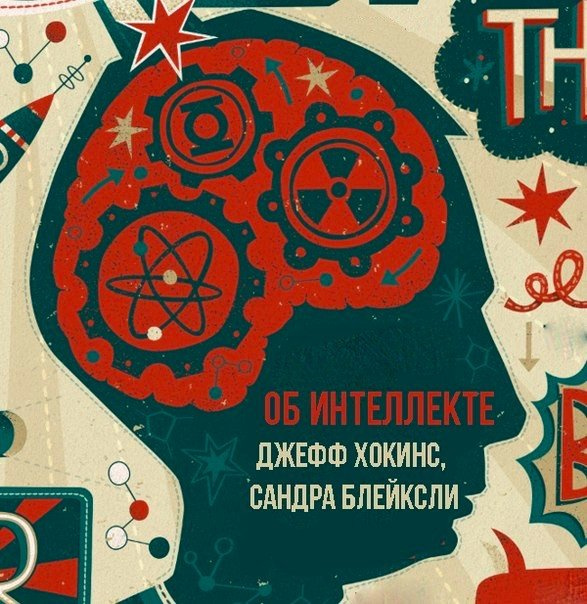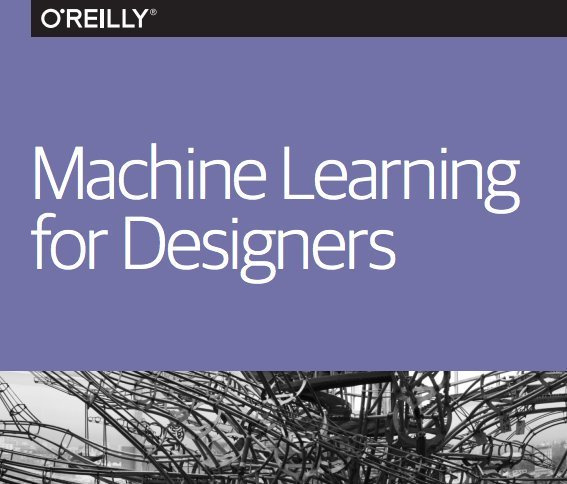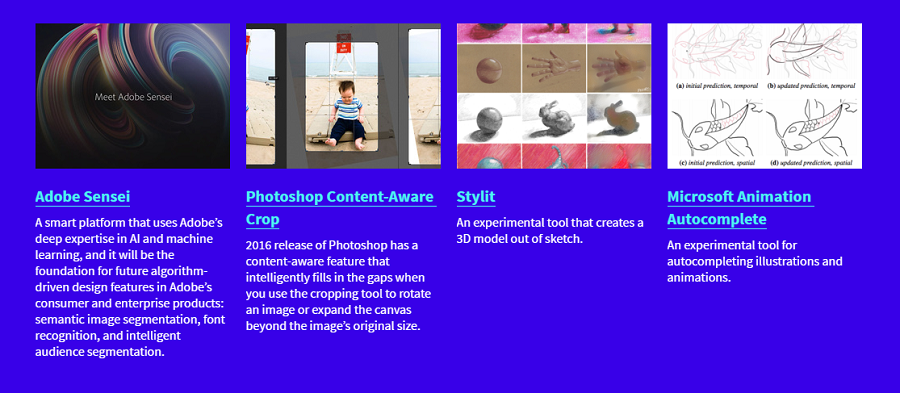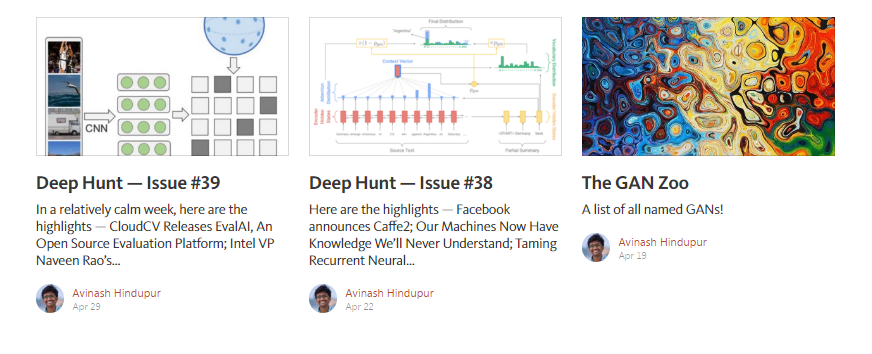5 sources about algorithmic design, if you just started to be interested in them
We understand where it is available to read and feel what machines can in design (and what to read before).

Do robots dream of electricians ? Will robots replace web designers? This was the question that I wondered for a second when I learned that we were learning to make new websites from old ones - with neural networks and such and such a mother. Understanding "Of course not" came pretty quickly - why, we talked in the last article with John Gold.
')
The answer itself came in a working chat: colleagues at uKit AI regretted the sympathetic humanities and began to throw links - that neural networks already can on the web, why this is not a dream and how it works. As a result, a desktop library with available theoretical and practical materials gathered.
Interest in the topic “car, make it for me” was cut in the early 2000s. The older brother Voldar brought the disk from somewhere, said “It will be all right” - and spent the whole evening fiddling with the microphone settings. In short, we didn’t manage to launch the speech recognition system in the text.
But today at work I use extensions like Speechpad on a laptop to dictate the “skeleton” of the text - including this one. True, it is necessary to artificially slow down yourself and generally try to speak as if you were Levitan.
Therefore, skepticism to the topic was.
And this skepticism originated in 2009. And the thing is in this little brochure that we were given on the course of philosophy. In short, this is an article stating that "someone else's soul is darkness." Nagel explains very well why people do not understand each other: so if you encounter work or in life, read, it will help you to fall into Zen at such moments.

It is easy to find the translation of an article in open sources.
The whole explanation is based on the person’s attempt to understand how the bat’s mind works: yes, you can hang your head down, squint and run around the office, waving your hands ... You can even wait for the moment when British scientists can turn you into a werewolf. But! There is still a “black box” in the head of the mouse - and if we can get to the bottom of it, the big question. Here the author comes to this conclusion.
These few pages of thinking about whether we can understand our own or someone else's consciousness can also be called “one against AI”. Firstly, the thought “if we cannot understand a small creature that hangs upside down for half a day, then to something bigger” can be traced quite clearly. And secondly, the article appeared on the eve of AI Winter, a period in the mid-1970s, when development expenditures in this area were drastically reduced.
With such doubts, I went to the chat. And that's what happened.
If the treatise on the bat has disheartened you, the founder of Palm Computing explains why things are not so bad. Jeff Hawkins presents his theory of hierarchical temporal memory and tries to understand what is possible from human experience and what is not worth relaying to a machine.

Since 2007, the translation of the book into Russian is available, he has already sustained several publications. You can order in almost any online book.
The theme of AI Hawkins fascinated from his youth and all his life collected research from different fields of science - and so he supplemented the single concept underlying his work.
In addition to references to scientific works and sources for further study, each chapter of the book contains an accessible example-illustration: “Chinese room” (do you learn Chinese if you automatically translate according to the instructions) , experiment with a door (why a person does not hang up if you change the handle on the front door, and the car - can) and so on.
The book is criticized for excessive popularity and minimal representation of the opinions of opponents. But for the humanities the most it. Therefore, Paul, the CTO of our project, throws it in all.
(recommends lyubim )
If we talked above about the concept of consciousness and intelligence as a whole (in any, natural and artificial representation), then all references below will be on the topic of generative design.
The O'Reilly publishing house noticed in time the emergence of new AI / ML-tools for designers, found an expert and practice (Hebron is busy creating a Foil design tool using machine learning) - and released a free book with him.

The pdf version is exchanged via email to your publisher site . After the subscription, they do not particularly spam. There is no translation of the book into Russian yet.
The book can be considered as a desktop one - there is an introductory theory, there is an overview of the platforms and instructions on what to do with them. Again, it is worth noting the good work with examples: Hebron perfectly illustrates why and how to implement machine learning in the work on interfaces, as well as how new technologies will enhance the capabilities of your users.
If it does, the author has a personal site where you can find additional information on the topic.
(recommends Kurt )
Here there are translations of interesting foreign articles on the use of neural networks in web design and related topics.

Recently, the piggy bank has been replenished with the story of how to teach the car to “play with fonts” .
On average, we publish two large articles per month. Here's how it happens: there is still the same general chat, where interesting links are flying. If the material is recognized as interesting by the majority of participants, then our beautiful Tanya in the breaks between the main work - localization of uKit - makes excellent translations. For example, now she is translating the story of how the Microsoft clip influenced the “predictability” of design in dozens of modern services, websites and applications.
(recommends alexahdp )
Yuri - “the head of Mail.ru’s design services portal team”, as well as an evangelist of everything related to design with the participation of machines, maintains his English-language selection of links to interesting tools and useful articles on the topic.

Now there are 5 categories on the site : “Creating an interface”, “Preparing content”, “Personalizing user experience”, “Graphic design”, “Other”.
Conveniently - everything is laid out on the shelves. Visitors can supplement collections by sending links to Vetrov or their favorite projects. Crowdsourcing in action!
(recommends RomanSt )
Another evangelist of AI, but more broadly, Hindupur publishes regular digests on its website “what happened in the AI world”. And more recently, I began to make collections. Selections (more precisely, a selection, but we hope for the emergence of new ones) are especially good.

For almost a year, the author maintains a given weekly pace and from September to May published 40 materials on the site .
Very often, any “lists of hundred useful tools” are quickly irrelevant - once released, they are not checked for compliance with the present day: the terms of use of the project will change, the description is outdated, if not the project has died.
This author regularly traverses his sources and updates the list of generative adversarial networks (the same selection is devoted to the GAN) that can be used in the recognition and evaluation of graphics.
You can also follow the release of new digests and collections on the project twitter.
***
PS Thank you if it was helpful. Special thanks, if you share your sources of information on the algorithmic (generative) design for sympathizers - we will include them in the selection with the indication of the author who recommended the resource or book.

')
The answer itself came in a working chat: colleagues at uKit AI regretted the sympathetic humanities and began to throw links - that neural networks already can on the web, why this is not a dream and how it works. As a result, a desktop library with available theoretical and practical materials gathered.
Prehistory of humanities
List itself
Interest in the topic “car, make it for me” was cut in the early 2000s. The older brother Voldar brought the disk from somewhere, said “It will be all right” - and spent the whole evening fiddling with the microphone settings. In short, we didn’t manage to launch the speech recognition system in the text.
But today at work I use extensions like Speechpad on a laptop to dictate the “skeleton” of the text - including this one. True, it is necessary to artificially slow down yourself and generally try to speak as if you were Levitan.
Therefore, skepticism to the topic was.
Prehistory “What does it mean to be a bat?” - Thomas Nagel, 1974
And this skepticism originated in 2009. And the thing is in this little brochure that we were given on the course of philosophy. In short, this is an article stating that "someone else's soul is darkness." Nagel explains very well why people do not understand each other: so if you encounter work or in life, read, it will help you to fall into Zen at such moments.

It is easy to find the translation of an article in open sources.
The whole explanation is based on the person’s attempt to understand how the bat’s mind works: yes, you can hang your head down, squint and run around the office, waving your hands ... You can even wait for the moment when British scientists can turn you into a werewolf. But! There is still a “black box” in the head of the mouse - and if we can get to the bottom of it, the big question. Here the author comes to this conclusion.
These few pages of thinking about whether we can understand our own or someone else's consciousness can also be called “one against AI”. Firstly, the thought “if we cannot understand a small creature that hangs upside down for half a day, then to something bigger” can be traced quite clearly. And secondly, the article appeared on the eve of AI Winter, a period in the mid-1970s, when development expenditures in this area were drastically reduced.
With such doubts, I went to the chat. And that's what happened.
For information that can be taken in one place quite openly and legally, direct links are given to the necessary resources. In other cases, you are free to choose a resource from which you can buy, download or start exploring the source.
1. “On the intellect” - Jeff Hawkins, Sandra Blaksley, 2004
(recommends pavel_kudinov )If the treatise on the bat has disheartened you, the founder of Palm Computing explains why things are not so bad. Jeff Hawkins presents his theory of hierarchical temporal memory and tries to understand what is possible from human experience and what is not worth relaying to a machine.

Since 2007, the translation of the book into Russian is available, he has already sustained several publications. You can order in almost any online book.
The theme of AI Hawkins fascinated from his youth and all his life collected research from different fields of science - and so he supplemented the single concept underlying his work.
In addition to references to scientific works and sources for further study, each chapter of the book contains an accessible example-illustration: “Chinese room” (do you learn Chinese if you automatically translate according to the instructions) , experiment with a door (why a person does not hang up if you change the handle on the front door, and the car - can) and so on.
The book is criticized for excessive popularity and minimal representation of the opinions of opponents. But for the humanities the most it. Therefore, Paul, the CTO of our project, throws it in all.
2. “Machine learning for designers” - Patrick Hebron, 2016
(recommends lyubim )
If we talked above about the concept of consciousness and intelligence as a whole (in any, natural and artificial representation), then all references below will be on the topic of generative design.
The O'Reilly publishing house noticed in time the emergence of new AI / ML-tools for designers, found an expert and practice (Hebron is busy creating a Foil design tool using machine learning) - and released a free book with him.

The pdf version is exchanged via email to your publisher site . After the subscription, they do not particularly spam. There is no translation of the book into Russian yet.
The book can be considered as a desktop one - there is an introductory theory, there is an overview of the platforms and instructions on what to do with them. Again, it is worth noting the good work with examples: Hebron perfectly illustrates why and how to implement machine learning in the work on interfaces, as well as how new technologies will enhance the capabilities of your users.
If it does, the author has a personal site where you can find additional information on the topic.
3. uKit.ai - our team’s blog about generative design
(recommends Kurt )
Here there are translations of interesting foreign articles on the use of neural networks in web design and related topics.

Recently, the piggy bank has been replenished with the story of how to teach the car to “play with fonts” .
On average, we publish two large articles per month. Here's how it happens: there is still the same general chat, where interesting links are flying. If the material is recognized as interesting by the majority of participants, then our beautiful Tanya in the breaks between the main work - localization of uKit - makes excellent translations. For example, now she is translating the story of how the Microsoft clip influenced the “predictability” of design in dozens of modern services, websites and applications.
4. Algorithms.design - Yuri Vetrov
(recommends alexahdp )
Yuri - “the head of Mail.ru’s design services portal team”, as well as an evangelist of everything related to design with the participation of machines, maintains his English-language selection of links to interesting tools and useful articles on the topic.

Now there are 5 categories on the site : “Creating an interface”, “Preparing content”, “Personalizing user experience”, “Graphic design”, “Other”.
Conveniently - everything is laid out on the shelves. Visitors can supplement collections by sending links to Vetrov or their favorite projects. Crowdsourcing in action!
5. Deephunt.in - Avinash Hindupur
(recommends RomanSt )
Another evangelist of AI, but more broadly, Hindupur publishes regular digests on its website “what happened in the AI world”. And more recently, I began to make collections. Selections (more precisely, a selection, but we hope for the emergence of new ones) are especially good.

For almost a year, the author maintains a given weekly pace and from September to May published 40 materials on the site .
Very often, any “lists of hundred useful tools” are quickly irrelevant - once released, they are not checked for compliance with the present day: the terms of use of the project will change, the description is outdated, if not the project has died.
This author regularly traverses his sources and updates the list of generative adversarial networks (the same selection is devoted to the GAN) that can be used in the recognition and evaluation of graphics.
You can also follow the release of new digests and collections on the project twitter.
***
PS Thank you if it was helpful. Special thanks, if you share your sources of information on the algorithmic (generative) design for sympathizers - we will include them in the selection with the indication of the author who recommended the resource or book.
Source: https://habr.com/ru/post/329916/
All Articles